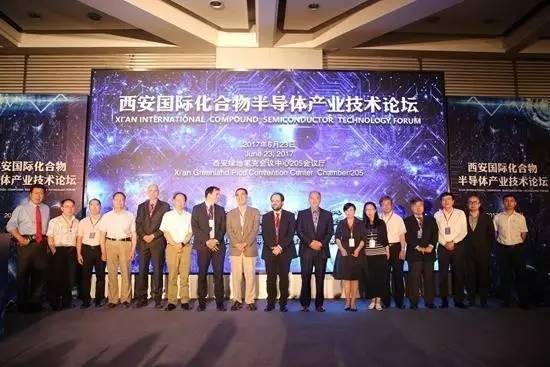A growing movement to eventually ban combustion engine cars has received a boost with a statement from China — the world’s largest car market — that it is studying such a move.
擁有世界最大汽車(chē)市場(chǎng)的中國(guó)表示,正在研究最終禁止內(nèi)燃發(fā)動(dòng)機(jī)汽車(chē),從而使這股不斷發(fā)展的全球趨勢(shì)得到一個(gè)提振。
Comments by a senior government official published on Sunday signalled that China might soon join the UK and France. Both countries recently announced they would prohibit the production of diesel and petrol cars by 2040.
周日見(jiàn)報(bào)的一名政府高官的言論表明,中國(guó)可能很快加入英國(guó)和法國(guó)的行列。英法最近宣布到2040年將禁止生產(chǎn)柴油和汽油發(fā)動(dòng)機(jī)汽車(chē)。
“Some countries have made a timeline for when to stop the production and sales of traditional fuel cars,” said industry vice-minister Xin Guobin in an article published by Xinhua, China’s official news agency.
“一些國(guó)家已經(jīng)制訂了停止生產(chǎn)銷(xiāo)售傳統(tǒng)能源汽車(chē)的時(shí)間表,”在官方的新華社發(fā)表的一篇文章中,中國(guó)工信部副部長(zhǎng)辛國(guó)斌表示。
“The ministry has also started relevant research and will make such a timeline with relevant departments. Those measures will certainly bring profound changes for our car industry’s development,” he said, predicting “turbulent” times ahead for the auto industry.
“目前工信部也啟動(dòng)了相關(guān)研究,也將會(huì)同相關(guān)部門(mén)制訂我國(guó)的時(shí)間表,這些舉措必將推動(dòng)我國(guó)汽車(chē)產(chǎn)業(yè)發(fā)展的環(huán)境和動(dòng)力發(fā)生深刻變化,”他表示。他預(yù)測(cè),汽車(chē)產(chǎn)業(yè)將迎來(lái)變革“劇烈的”時(shí)期。
Were China to adopt such a policy and provide a deadline, it would lend new force to efforts to end the reign of the internal combustion engine.
如果中國(guó)真的實(shí)行這樣的政策,制定最后期限,那將極大地推動(dòng)有關(guān)終結(jié)內(nèi)燃發(fā)動(dòng)機(jī)霸主地位的努力。
China has the world’s largest automobile manufacturing base — producing 28m vehicles overall in 2016, according to the International Organization of Motor Vehicle Manufacturers. The figure includes commercial vehicles as well as cars and represents nearly 30 per cent of the world total of 94m last year.
國(guó)際汽車(chē)制造商協(xié)會(huì)(OICA)的資料顯示,中國(guó)擁有世界上最大的汽車(chē)制造基地,2016年總產(chǎn)量達(dá)到2800萬(wàn)輛。該數(shù)字包括商用車(chē)和轎車(chē),占去年全球9400萬(wàn)輛總產(chǎn)量的近30%。
Beijing is concerned about rising urban pollution, climate change and China’s dependence on imported foreign oil supplies, and has been encouraging the nascent new energy vehicle (NEV) industry with measures such as subsidies and easier access to car registration for NEV buyers.
北京方面擔(dān)憂越來(lái)越嚴(yán)重的城市污染、氣候變化以及中國(guó)對(duì)進(jìn)口石油的依賴(lài)程度,并且在借助補(bǔ)貼和讓新能源汽車(chē)更容易上牌等措施,鼓勵(lì)新能源汽車(chē)行業(yè)的發(fā)展。
The government also sees the advent of electric vehicles as a way to leapfrog global carmakers and secure a larger chunk of the car business for Chinese carmakers, which have never been particularly strong at making combustion engines. With 507,000 NEVs sold domestically in 2016, China leads the world as an electric vehicle market.
中國(guó)政府還認(rèn)為,電動(dòng)汽車(chē)的問(wèn)世是一個(gè)機(jī)會(huì),可以使中國(guó)汽車(chē)制造商實(shí)現(xiàn)跳躍式發(fā)展,超越全球汽車(chē)制造商,并爭(zhēng)取到更多汽車(chē)業(yè)務(wù)。中國(guó)廠商在制造內(nèi)燃發(fā)動(dòng)機(jī)方面從未特別擅長(zhǎng)。2016年,中國(guó)國(guó)內(nèi)新能源汽車(chē)銷(xiāo)量達(dá)50.7萬(wàn)輛,使中國(guó)成為世界最大的電動(dòng)汽車(chē)市場(chǎng)。

NEVs were recently identified as a priority by the Chinese industrial policy known as Made inChina 2025, and the sector is one of 10 high-tech industries in which China wants to createnational champions that will be globally competitive.
新能源汽車(chē)最近被列為中國(guó)產(chǎn)業(yè)政策《中國(guó)制造2025》(Made in China 2025)的一個(gè)重點(diǎn),該行業(yè)是中國(guó)想要締造具有全球競(jìng)爭(zhēng)力的國(guó)家冠軍企業(yè)的十大高新技術(shù)產(chǎn)業(yè)之一。
China surpassed the US in 2009 to become the world’s biggest car market and has set theambitious goal of reaching 7m annual NEV sales by 2025. Buoyed by generous subsidies andmeteoric sales, more than 200 companies have announced their intention to make and sellNEVs in China.
中國(guó)在2009年超過(guò)美國(guó),成為世界最大汽車(chē)市場(chǎng),并已制定了到2025年讓新能源汽車(chē)年度銷(xiāo)量達(dá)到700萬(wàn)輛這一雄心勃勃的目標(biāo)。在慷慨補(bǔ)貼和銷(xiāo)售火爆的激勵(lì)下,已有200多家公司宣布有意在中國(guó)制造和銷(xiāo)售新能源汽車(chē)。
China’s government is also setting up a policy of carbon trading that will encourage NEVproduction, to be implemented as early as next year. This will require all carmakers to producea quota of NEVs or buy carbon credits to compensate. Draft rules, part of an effort to jump-start the local production of electric vehicles, have been circulating but have yet to become law.
中國(guó)政府還正在制定鼓勵(lì)新能源汽車(chē)生產(chǎn)的碳交易政策,最快在明年就能實(shí)施。它將要求所有汽車(chē)制造商都生產(chǎn)一定配額的新能源汽車(chē),或者購(gòu)買(mǎi)碳排放額度作為補(bǔ)償。作為推動(dòng)電動(dòng)車(chē)本土生產(chǎn)的努力的一部分,相關(guān)規(guī)則草案已經(jīng)流傳了一段時(shí)間,但尚未成為法律。
Late last month, Reuters reported that China was likely to delay implementing these productionquotas for electric vehicles, giving global automakers more time to prepare.
上月下旬,路透社(Reuters)曾報(bào)道稱(chēng),中國(guó)很可能推遲實(shí)施電動(dòng)汽車(chē)生產(chǎn)配額制度,讓跨國(guó)汽車(chē)制造商有更多時(shí)間準(zhǔn)備。




